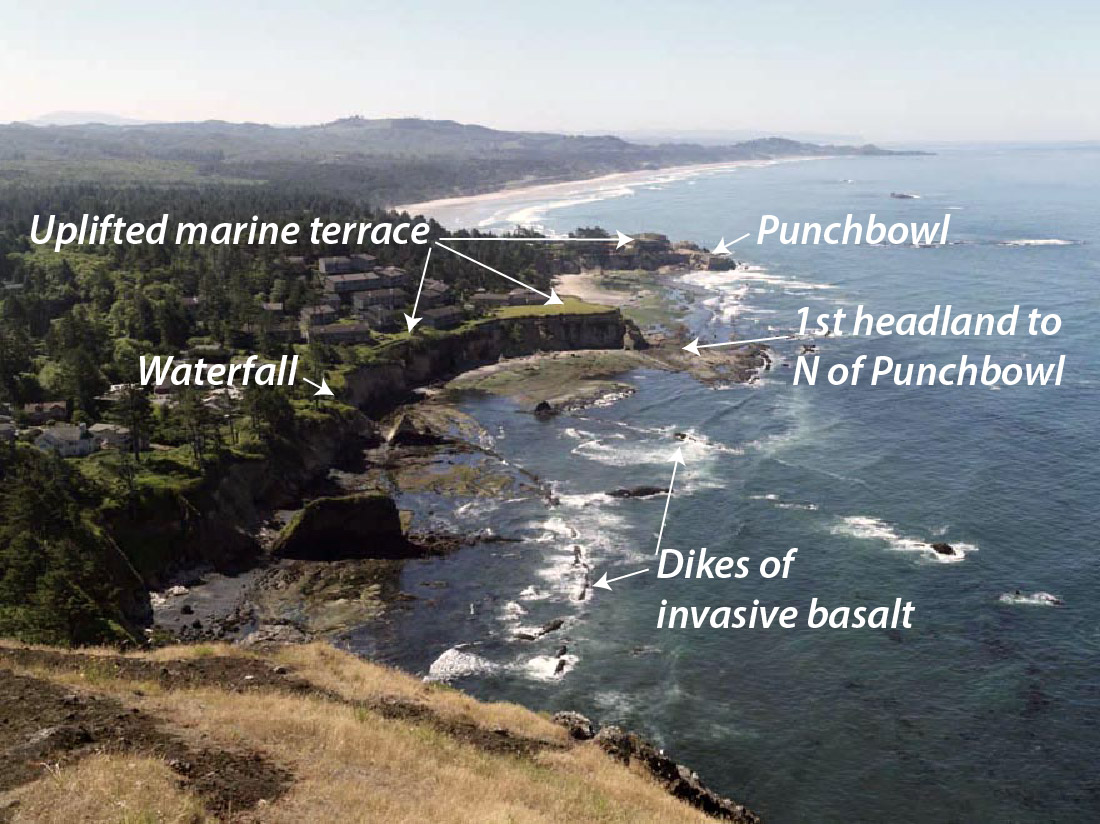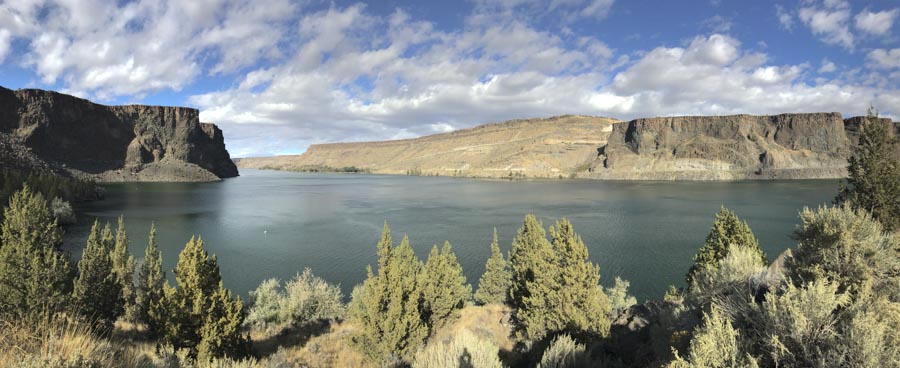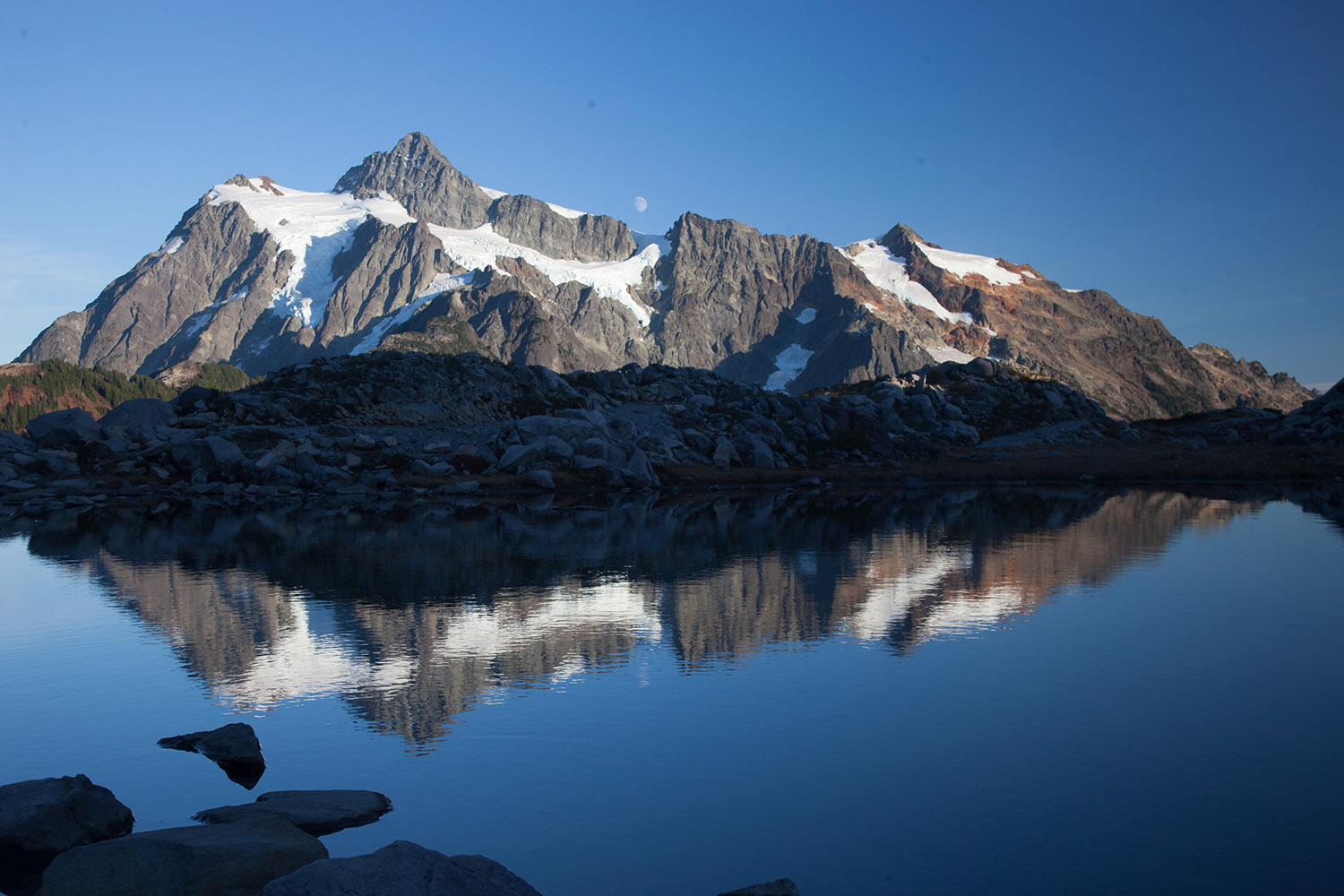35 Minutes of Humanity
This essay first appeared in the June, 2023 issue of Desert Report
–Click on each image to see them at full size
You don’t see many rocks where I live in western Oregon. Lush forests or savannah-like areas dotted with Oak, yes, but the bedrock mostly lies beneath the vegetation and a thick mantle of soil. Just south of town though, the highway cuts through a hillside to expose rock that reminds us of our geologic setting –and taken in context, points to Earth’s incomprehensibly long history.
I’m standing in a soft rain at the foot of the roadcut, looking upwards at some 50 feet of strata. The rocks are sedimentary, having been deposited in lakes and rivers, but there’s also a thin layer of light-gray ash near the top of the cut and a much thicker one near the bottom –and slashing vertically through everything are two narrow gray, almost black, bodies of igneous rock. Called dikes, they worked their way upwards as molten rock along cracks in the older sedimentary rock before cooling and crystallizing where they are now.

Evidence of ancient volcanic activity abounds: ash, dikes, even the sedimentary rocks are made mostly of volcanic particles. And on clear days, I can walk to the south side of the roadcut and look eastward to forested ridges of the Western Cascades that give way in some 50 miles to the snow-capped peaks of the High Cascades. They’re all volcanic. The High Cascades volcanoes are young and active whereas those of the western Cascades are long extinct and deeply eroded. Combined, the two parts of this range formed over a period of about 40 million years and produced miles and miles of lavas, ash and debris flows, and volcanic-rich sedimentary rocks.
Trying to imagine this 40 million-year history is like watching the stars, filling me with wonder and leaving me humbled, subdued, and exhilarated, all at the same time. And by geologic standards, 40 million years isn’t extremely long. Death Valley, California, one of my favorite haunts, showcases some 30,000’ of sedimentary rock that was deposited over a period of 400 million years, between about 700 and 300 million years ago –and beneath them lies rock that records conditions on Earth’s surface over a billion years ago. Anyone can see these rocks, touch them, and imagine the incomprehensible.

When I was in college, I encountered a textbook passage that helped me visualize geologic time. The author, Don Eicher of the University of Colorado, imagined Earth’s entire 4.54 billion year history compressed into a single year. He pointed out that, in this calendar, Earth’s first organisms would’ve lived sometime in late March, the first creatures that produced shelly fossils appeared November 17, and the first land plants around November 23. He included many noteworthy events, but they didn’t include the Cascade Range. By my calculations, the 40 million years of Cascade volcanic activity existed for about the last three days of this calendar year. The first humans? They appeared about 35 minutes before midnight.
It boggles the mind to think about how much humans have done in those 35 minutes, so much so that we’re considering naming a geologic period of time after ourselves: the Anthropocene. It’s likely that we’d designate it an “epoch” so it would naturally come after our present epoch, the Holocene, which followed the Pleistocene (Ice Age), which followed the Pliocene, and so on. Of course, any formal designation would require people to agree on exactly when it began and for that there is little consensus because humans caused major changes on Earth at different places during different times. The one time most researchers agree affected everywhere at once was the widespread atomic weapons testing in the late 1940s and 1950s, which spread radionuclides across the planet and are now an identifiable part of the sedimentary record.

Without question, humans are an indomitable geologic force, especially since the early 1950’s. It’s no wonder many researchers call that time “The Great Acceleration”, when our technology and energy use increased exponentially. And less than 40 years later during the 1990s, we recognized that our activities move more material each year than any other natural force such as rivers or landslides or glaciers. Since then, our “bioturbation” has only increased. We have colonized every habitable nook and cranny on this planet and are precipitating environmental catastrophes we’re only beginning to comprehend.
But to call this human time period a geologic epoch seems to imply a certain longevity to both the period and to its trademark origin: Homo sapiens –and since 1950, the earth has aged barely a half second in its year-long calendar. I wonder how much longer we can last. To me, the concept of the Anthropocene as an epoch seems contingent on us surviving our environmental crises and continuing for thousands of years. After all, the Holocene Epoch, which it would replace, lasted for 10,000 years, and all the epochs before lasted millions. Instead of a new epoch, we may instead be in a transitional period from the Holocene to something that postdates Homo sapiens. If that’s the case, then we’re witnessing more of dramatic event: mass extinctions and environmental changes that will herald an altogether different ecosystem.
I reach down at my feet and untangle a wet plastic bag from some rocks that have fallen from the roadcut. So different, yet both pieces of sediment just the same. Both may find their way into the rock record. I wonder how our part of the record will appear long after our time has passed. I imagine we’ll be a readily identifiable layer, thick in some places and thin in others, and everywhere representing the same moment in time. It won’t be an epoch, but a fleeting second or two in Earth’s year of ages.
.
Photos available for free download on geologypics.com













 From the geologic map, modified from Bishop and Smith, 1990, you can see how the brown-colored canyon-filling basalt, (called the “Intracanyon Basalt”) forms narrow outcrops within today’s Crooked and Deschutes canyon areas. It erupted about 1.2 million years ago and flowed from a vent about 60 miles to the south. You can also see that most of the bedrock (in shades of green) consists of the Deschutes Formation, and that there are a lot of landslides along the canyon sides.
From the geologic map, modified from Bishop and Smith, 1990, you can see how the brown-colored canyon-filling basalt, (called the “Intracanyon Basalt”) forms narrow outcrops within today’s Crooked and Deschutes canyon areas. It erupted about 1.2 million years ago and flowed from a vent about 60 miles to the south. You can also see that most of the bedrock (in shades of green) consists of the Deschutes Formation, and that there are a lot of landslides along the canyon sides.



















